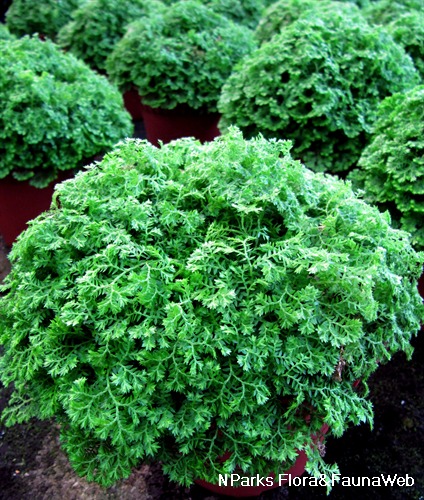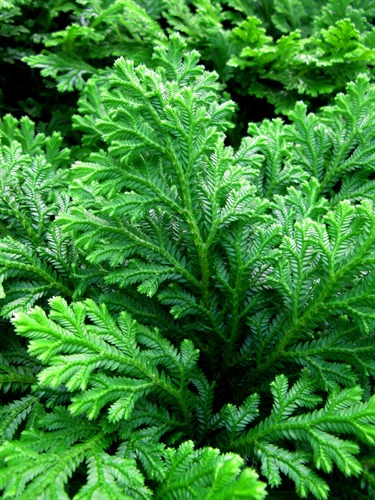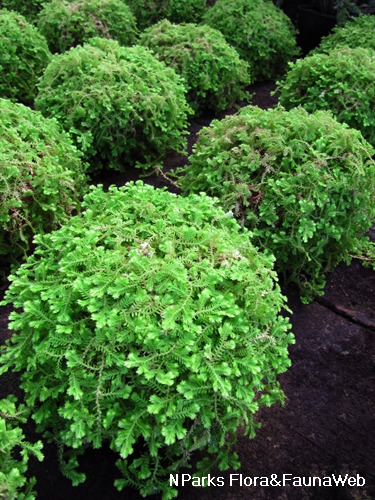.jpg)
Back
Selaginella willdenowii (Desv.) Baker
| Family Name: | Selaginellaceae |
| Common Name: | Willdenow's Spikemoss, Peacock Fern, Blue Spike Moss, Blue Club Moss, Vine Spike Moss, Paku Selemah, 藤卷柏 |
Selaginella willdenowii or Willdenow’s Spikemoss was named after a German naturalist – Carl Ludwig von Willdenow. Native to Singapore, this fern ally is easily identified by its iridescent, metallic bluish green fronds, which reveal hues of green and pink when viewed at different angles. Found naturally on the forest floors, its preference for low light and moist conditions makes Willdenow’s Spikemoss a suitable house plant and good groundcover in shady conditions.
Name
Classifications and Characteristics
| Plant Division | Ferns & Lycophytes (Non-Seed Vascular Plants) (Clubmoss & Spikemoss) |
|---|---|
| Plant Growth Form | Creeper |
| Lifespan (in Singapore) | Perennial |
| Mode of Nutrition | Autotrophic |
| Plant Shape | Shrubby |
Biogeography
| Native Distribution | Thailand, Peninsular Malaysia, Malesia |
|---|---|
| Native Habitat | Terrestrial (Primary Rainforest, Monsoon Forest) |
| Preferred Climate Zone | Tropical, Sub-Tropical / Monsoonal |
| Local Conservation Status | Native to Singapore (Vulnerable (VU)) |
Description and Ethnobotany
| Growth Form | Herbaceous, fern-like species with a scrambling growth habit. |
|---|---|
| Foliage | Iridescent fronds are mostly blue-green with pinkish hues depending on the angle at which they are viewed. They are composed of two leaf types, lateral and median leaves, which are both arranged in 2 rows along the stem. Lateral leaves are ovate to oblong (3-4 mm long and 1.5-2 mm wide), while median leaves are even smaller and vary in shape. |
| Reproductive Parts - non-flowering plant | Cone-like strobili composed of sporophylls (spore-producing structures) are produced at the branch tips. The sporophylls are heart-shaped or egg-shaped to triangular. |
| Habitat | Occurs on the forest floor and often twines around other plant species. |
| Etymology | Genus Selaginella is derived from the Latin word selago, which means clubmoss. Species willdenowii is most likely named in honor of Carl Ludwig von Willdenow (1765 - 1812), who was a German naturalist and physician, Director of Berlin Botanical Garden and author of Flora Berolinensis prodromus (1787). |
Landscaping Features
| Desirable Plant Features | Ornamental Foliage |
|---|---|
| Landscape Uses | Container Planting, Flowerbed / Border, Interiorscape/ Indoor Plant, Parks & Gardens, Small Gardens |
| Thematic Landscaping | Naturalistic Garden |
Fauna, Pollination and Dispersal
| Pollination Method(s) | Abiotic (Water) |
|---|
Plant Care and Propagation
| Light Preference | Semi-Shade, Full Shade |
|---|---|
| Water Preference | Lots of Water, Occasional Misting |
| Plant Growth Rate | Moderate |
| Rootzone Tolerance | Waterlogged Soils (Drains Site), Fertile Loamy Soils, Well-Drained Soils, Acidic (low pH) Soils |
| Maintenance Requirements | Moderate |
| Propagation Method | Stem Cutting, Division |
Foliar
| Foliage Retention | Evergreen |
|---|---|
| Mature Foliage Colour(s) | Blue, Green |
| Mature Foliage Texture(s) | Glossy / Shiny, Scaly |
Non - Foliar and Storage
| Stem Type & Modification | Herbaceous |
|---|---|
| Root Type | Underground (Fibrous Root) |
Image Repository
Others
| Master ID | 282 |
|---|---|
| Species ID | 1578 |
| Flora Disclaimer | The information in this website has been compiled from reliable sources, such as reference works on medicinal plants. It is not a substitute for medical advice or treatment and NParks does not purport to provide any medical advice. Readers should always consult his/her physician before using or consuming a plant for medicinal purposes. |

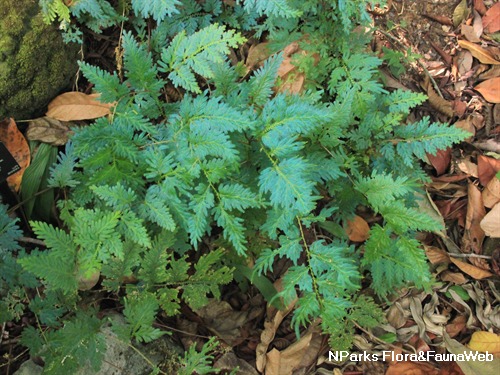
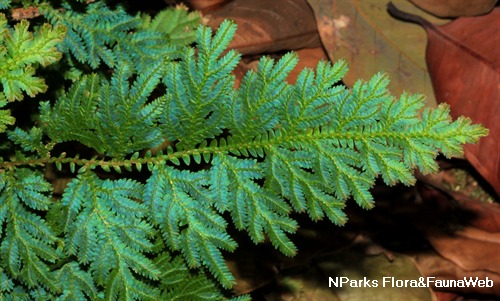
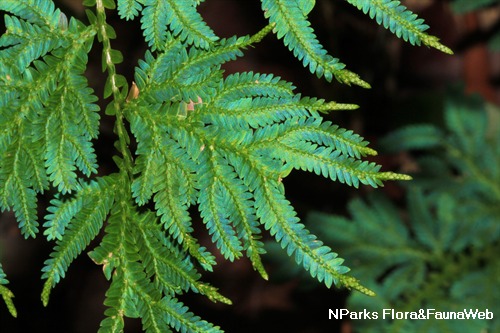
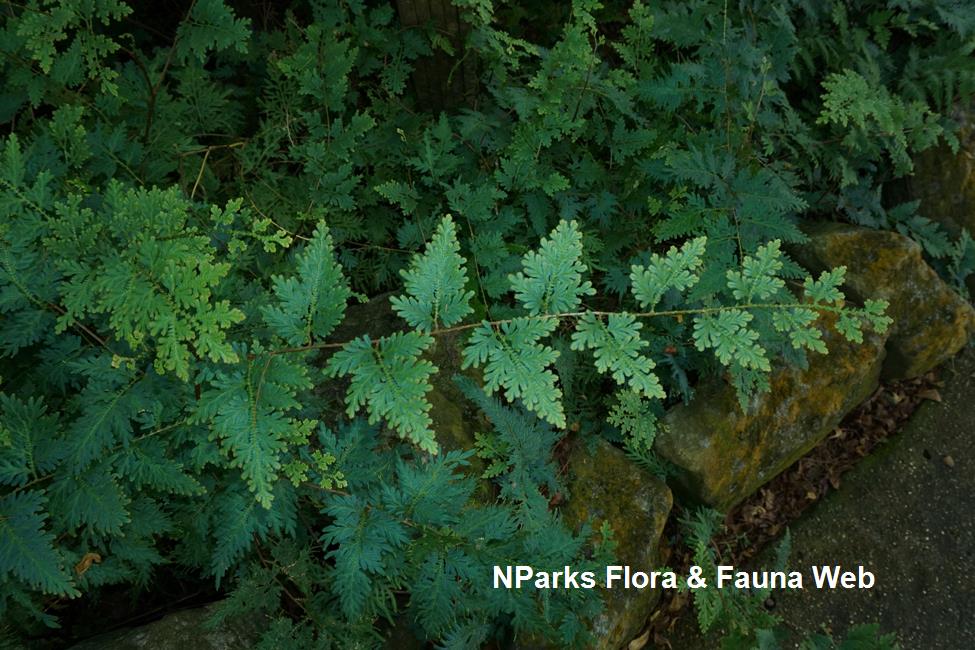
.jpg)
.jpg)
